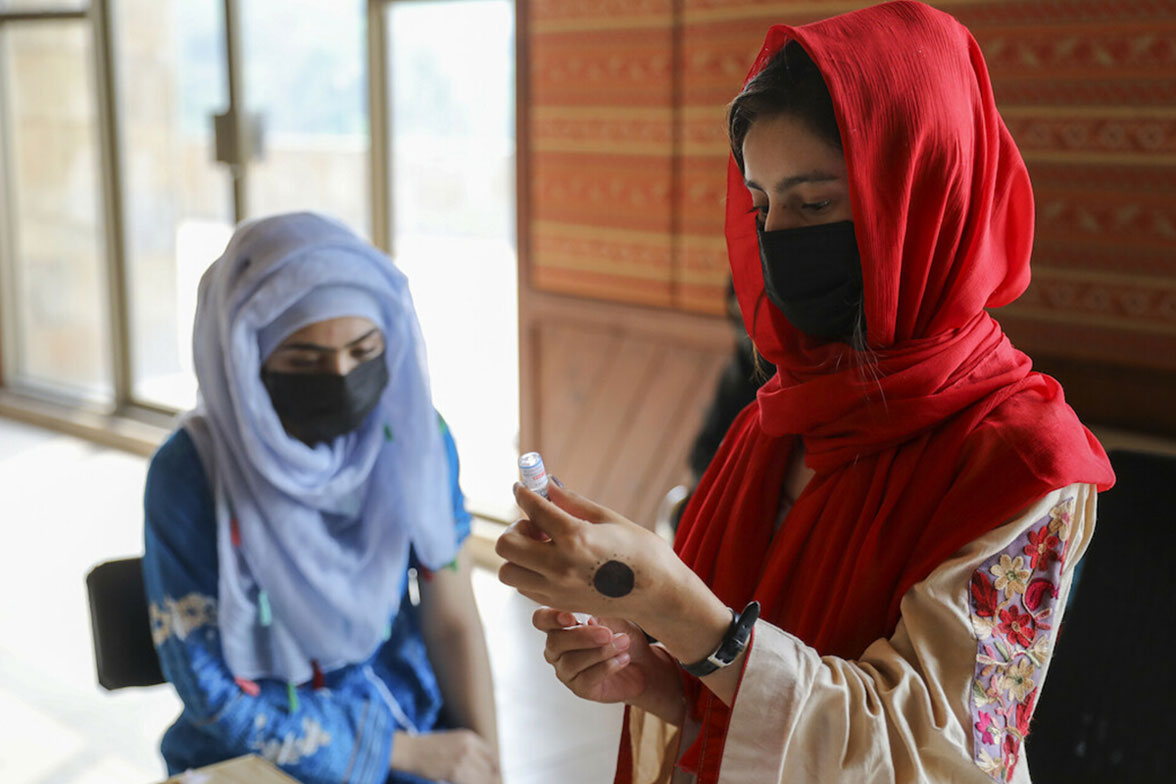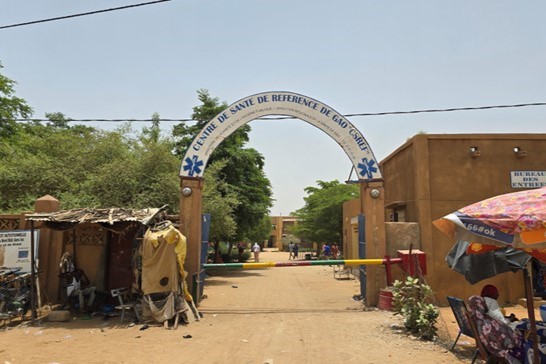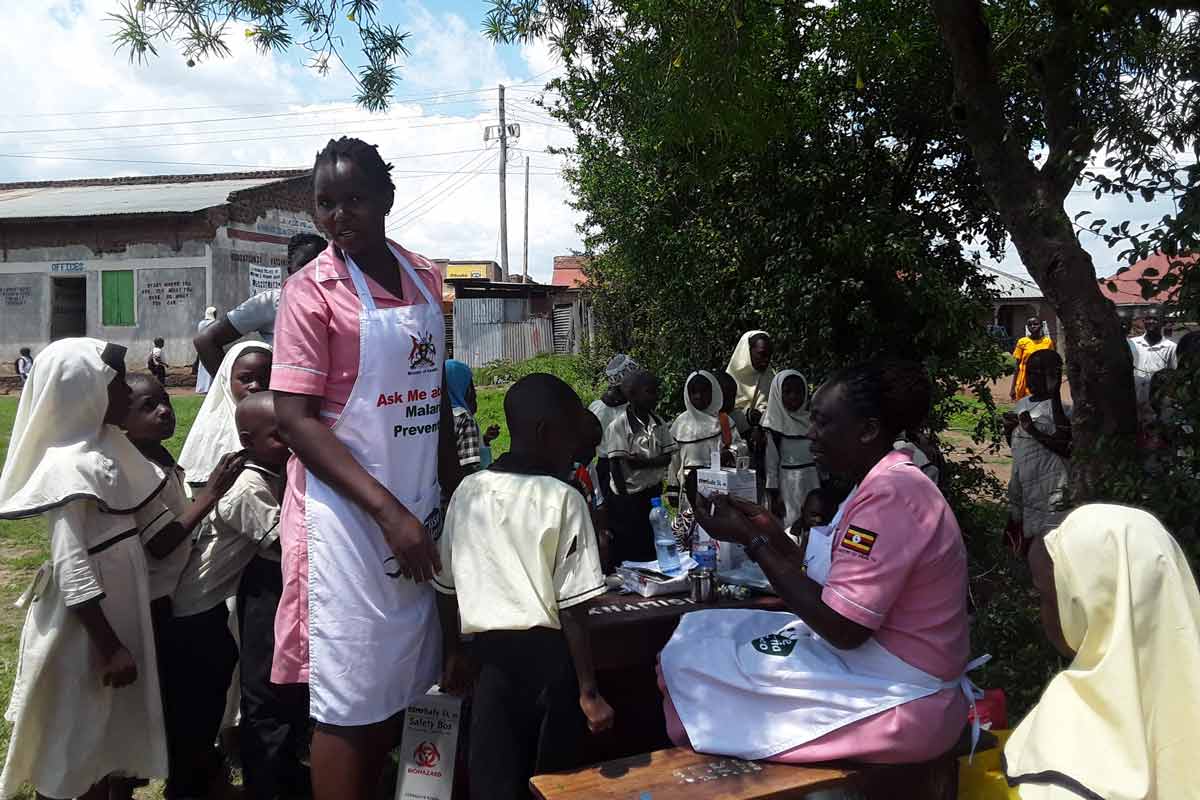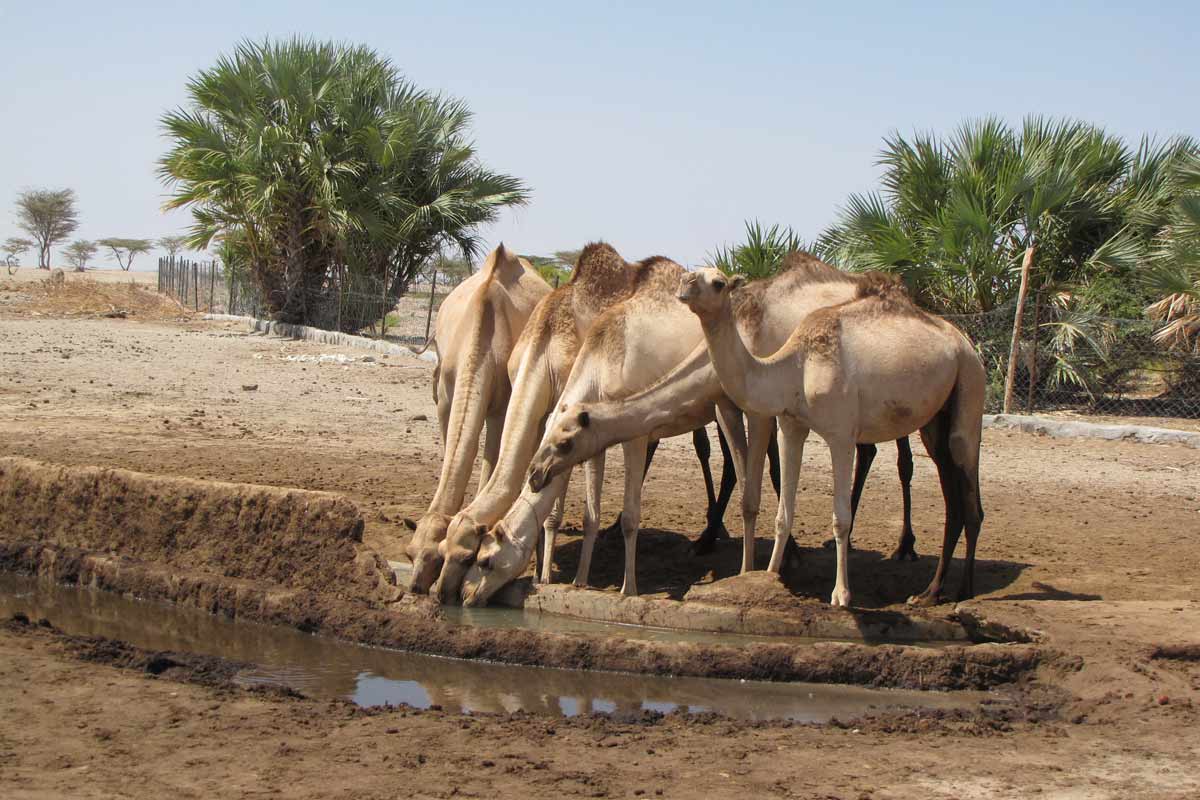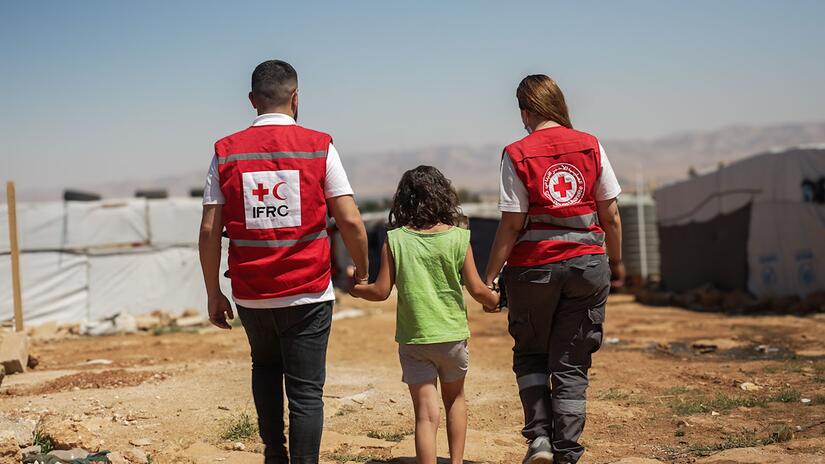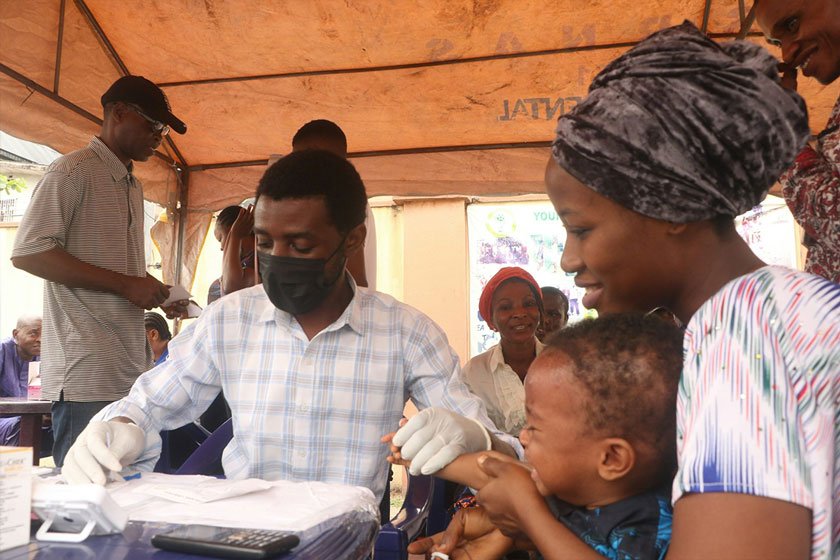How Kenya is boosting babies’ access to their so-called “first vaccine”
It’s packed with nutrients and protective antibodies, but just 60% of infants in the east African country are fed exclusively on breastmilk.
- 4 June 2024
- 8 min read
- by Joyce Chimbi
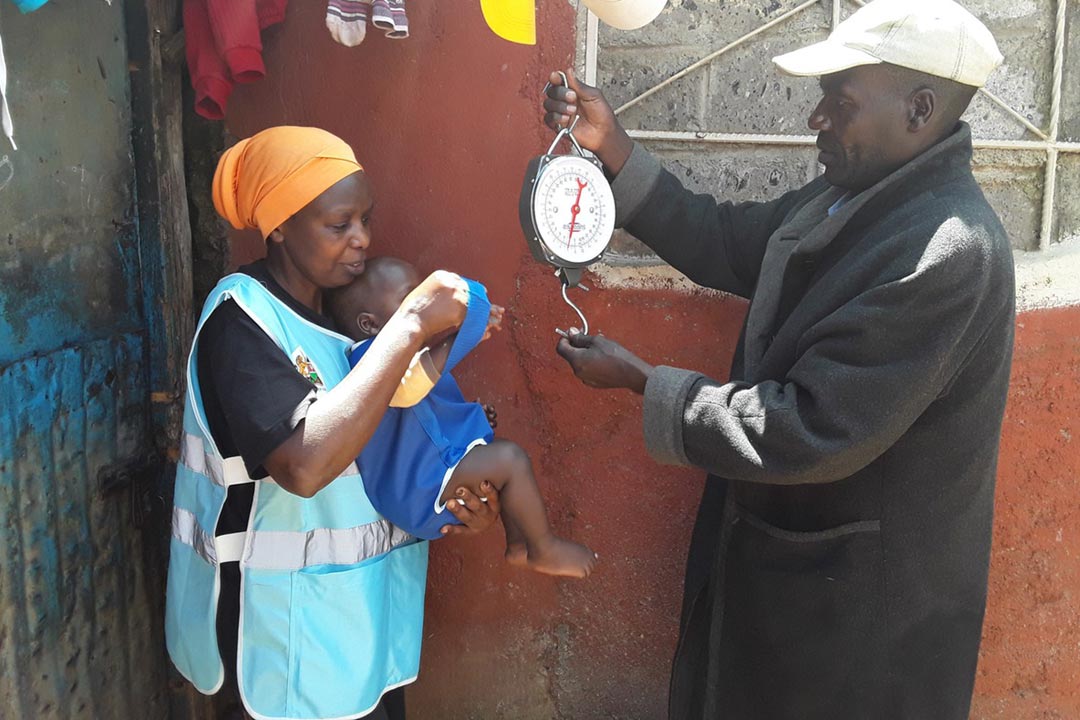
In Kenya, the proportion of babies being fed exclusively on breastmilk has risen from just 13 percent in 1998, to 60 percent in 2022. That trend has helped drive down rates of early childhood mortality, experts say. It's no coincidence that under five-mortality decreased from 115 deaths per 1,000 live births in 2003 to 41 deaths per 1,000 live births in 2022.
But there's further to go to make sure infants are protected with what's often termed a baby's "first vaccine".
Newborns are uniquely vulnerable. In Kenya, neonatal deaths – that is, deaths in the first 28 days of life – make up 66% of all infant deaths, and 51% percent of under-five deaths. Nearly 45% of all under-five years mortality is linked to malnutrition, which weakens immune systems and leaves children more fragile in the face of disease and other shocks.
"Breastmilk is clean, safe and uniquely formulated to meet a baby’s nutritional needs. Breastfeeding improves a child’s response to routine immunisation. Combined, these are the two most cost-effective ways to lower infant and child mortality."
– Jedida Wamaitha, paediatric nurse
But the first breastmilk, colostrum, is packed with protection. Nutrient-dense, it's also full of antibodies that can protect the newborn.
"All alternatives to breastmilk are less nutritious. Breastmilk is clean, safe and uniquely formulated to meet a baby's nutritional needs. Breastfeeding improves a child's response to routine immunisation. Combined, these are the two most cost-effective ways to lower infant and child mortality," says Jedida Wamaitha, a Nairobi-based paediatric nurse. It's vital, she emphasises, not to neglect one or the other. "In the absence of proper nutrition, we have incidences of a high full basic vaccination coverage of, say, 89% in Kilifi, and at the same time the highest stunting rate of 37%."
Baby-friendly hospitals promote "first vaccine"
Of course, breastfeeding isn't possible in every case. Sometimes, doctors advise not breastfeeding, due to an infant's and/or a mother's underlying medical condition. Many preterm babies cannot breastfeed, and some mothers, such as Jennifer Leseni, suffer from breast hypoplasia and cannot produce enough milk.
"I always thought breastfeeding was second nature, but I could not do it back in January when I gave birth. Luckily, I unknowingly gave birth in a baby-friendly hospital and as a family, we received counselling and went on to make the best of the situation. The baby bonded with the immediate family very quickly, as they all participate in feeding her," she says.
Kenya has embraced the Baby-Friendly Hospital Initiative to create a conducive environment for optimal infant nutrition, with a strong focus on promoting exclusive breastfeeding in health facilities, or providing access to the best possible alternatives for mothers like Leseni who cannot breastfeed.
The initiative provides a ten-step, simplified roadmap to successful breastfeeding including skin-to-skin contact between mother and baby immediately after birth, initiation of breastfeeding within one hour of life, and breastfeeding as often as the baby wants day and night.
"[There is a] link between exclusive breastfeeding for six months and continued breastfeeding until the chid is two years [old] and the presence or absence of problems such as stunting and wasting or emaciated, low birth weight and childhood obesity. Breastfeeding corresponds with a lower rate of these issues," says Stephen Mulama, a health official at Nairobi County Department of Health.
Nutrition and immunity
Good nutrition and vaccination work together to protect children from illness long after the particularly vulnerable neonatal period.
Of the 45% of deaths among children under five in lower income countries that are estimated to be linked to malnutrition, a majority are precipitated by infectious disease.
Where malnutrition is rife, the same disease can cause far higher rates of damage than it would elsewhere. Measles, for example, is expected to kill about 1 in 1,000 unvaccinated but otherwise healthy children. In deprived settings, however, fatality rates of 15% have been recorded from the virus.
That means the provision of both vaccination and good nutrition is especially important in straitened economic conditions. A review paper released by Gavi and the Eleanor Crook Foundation last year explored the potential for integrated delivery of nutritional supplements alongside vaccines.
Tackling stigma and misinformation in the community
In an extension of the Baby-Friendly Hospital Initiative, the Ministry of Health also supports the Baby-Friendly Community Initiative, which focuses on interventions at the community level such as discouraging misinformation and disinformation related to breastfeeding, and harmful cultural practices that interfere with breastfeeding. "For instance, rubbing of a baby's gums with protective herbs often causes bruising and the wounded baby cannot breastfeed," Mulama says.
Have you read?
Maria Mwashigadi, a Kilifi-based community health worker (CHW) says taking education about optimal infant nutrition into the community is vital – there are mothers, especially young mothers, who might begin exclusively breastfeeding under the watchful eyes of nurses, but stop once outside the hospital due to religious, cultural and misleading information.
Mwashigadi says that in her experience, mothers younger than 20 years are less likely to breastfeed due to stigma associated with early pregnancies, and giving birth outside of wedlock. Young mothers are also highly likely to struggle with stress and depression due to fears of an uncertain future. Some leave their babies behind with family members in order to return to school.
Improving outcomes
Mulama, meanwhile, states that counties including Nyeri, Bungoma and Kisumu, where breastfeeding has surpassed the 60% percent mark, are also meeting their child nutritional targets. Kisumu has the lowest stunting rate countrywide, at 9% percent. Conversely, in 2022, just three in ten children in West Pokot were exclusively breastfed, and malnutrition there stands at 35%.
"These initiatives aim at raising awareness so that every mother and parent can make an informed decision about their child's nutrition. Those who cannot breastfeed are advised on the best alternatives available. We have 100,000 community health workers (CHWs) across the country to support mothers to overcome social and cultural barriers to proper child feeding," Mulama expounds.
A child who has not received breastmilk at all is up to 14 times more likely to die than one who has, he adds – especially from diarrhoea. A baby who is not breastfed in the first two to 23 hours of life can face an increased risk of death of up to 40% within the neonatal period.
There are also health benefits for mothers, he points out. "Breastfeeding also lowers the risk of breast and ovarian cancer, especially if breastfeeding continues for longer than one year. Breast cancer ranks second in cancer deaths and ovarian cancer is the fifth leading cause of death among women in Kenya."
Keeping an eye on the community, from the community
CHWs like Mwashigadi are mandated to visit a baby within 48 hours of being discharged from the hospital, for nutrition counselling and support. The health workers use the Electronic Community Health Information System (eCHIS-Kenya), run by the Ministry of Health, to manage their caseload, including tracking newborns and conducting follow-up for growth monitoring.
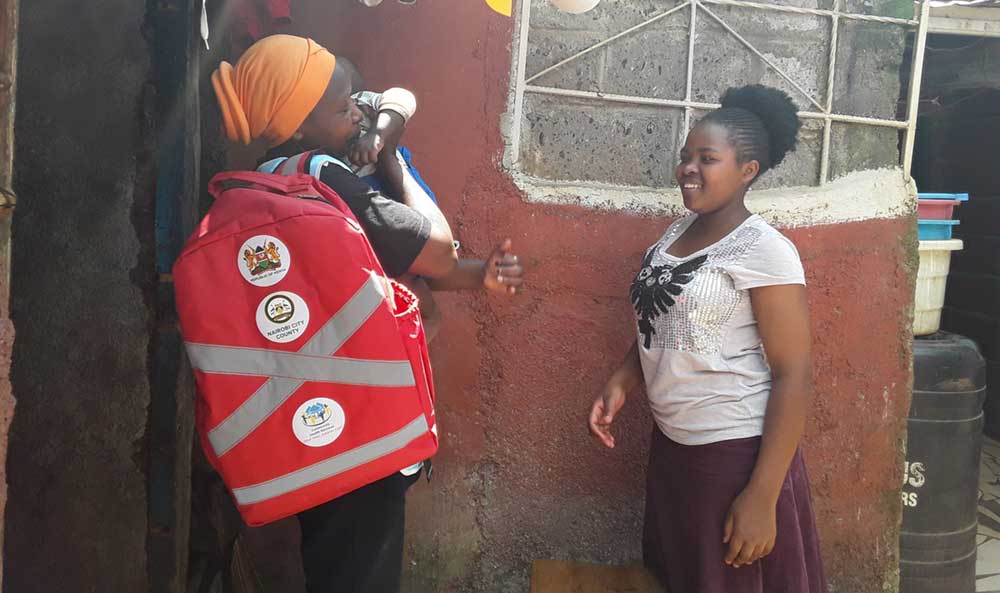
Credit: Joyce Chimbi
"We are attached to the primary health unit serving a certain number of households, from 33 to 100 households: it all depends on population size. I am in charge of 33 households and I have a digital phone with the eCHIS app. We weigh the babies at their doorstep and record what we see. We advise mothers that, if possible, breastmilk is the best source of food for infants. We also advise on nutrition options that can go with breastfeeding from six months to two years once a child exists [on] exclusive breastfeeding," Mwashigadi says.
CHWs, who live among the community they serve, encourage families to choose facility births. Not only is delivery safer with skilled medical workers on hand, but facility births can kick off a virtuous cycle of care. Government data shows that nearly 82% of babies in Kenya are born in health facilities. Nearly 87% of children whose mothers were counselled on breastfeeding during antenatal visits were exclusively breastfed for the first two days of life, compared to 27% of children whose mothers did not receive any antenatal counselling. Children born in health facilities are also more likely to access their scheduled vaccines.
Women living with HIV are often afraid of breastfeeding, Mwashigadi notes, even though the risk of passing on the virus to the baby is very low if the mother is on ARVs and regularly interacting with her health provider for monitoring under the Elimination of Mother-to-Child Transmission of HIV programme. The benefits of breastfeeding for both mother and child far outweigh the risks, she argues.
She has also encountered obstructive and ill-founded cultural beliefs. Some women are forbidden or discouraged from breastfeeding in the first two to three days of a child's life, as the first breastmilk, in fact, uniquely rich in protective benefits, is considered "dirty".
"A mother's first milk is likened to a cow's first milk after giving birth and taking the milk is taboo in various parts of the country. This delays breastfeeding and increases risk of diseases and especially diarrhoea, which is a chid killer," she said.
"Others will only breastfeed in private, for fear that their child will attract the 'evil eye' or bad omen and are unable to feed the child on demand. We are working very closely with mothers-in-law and traditional birth attendants. Due to their strong influence at the community level, [they] can introduce challenges to exclusive breastfeeding. For instance, they often encourage mothers to give their babies water, believing that a baby cannot live without water," she says.
Baby-friendly initiatives are considered high-impact interventions to bring the country back on track to reduce neonatal mortality rates from 22 deaths to 12 per 1,000 live births by 2030.
More from Joyce Chimbi
Recommended for you
